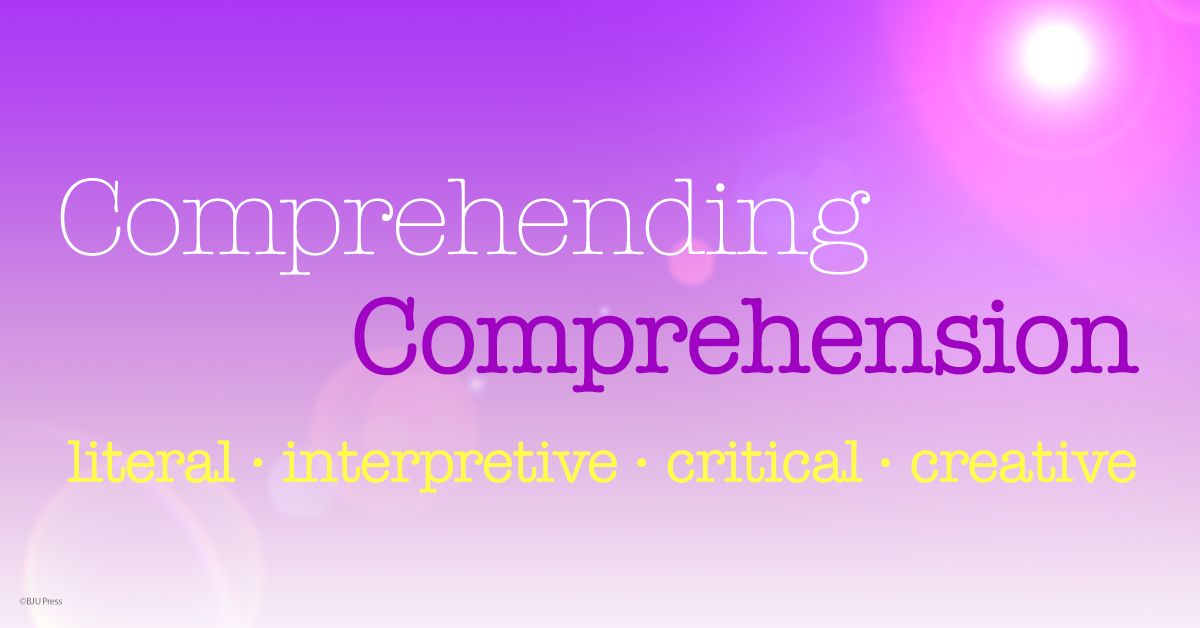
Many homeschool curricula claim to encourage comprehension in children, but what does it mean to comprehend something?
Comprehension is a group of skills that we use to relate language to meaning. The ability to comprehend takes place on four levels: literal (recognizing and remembering information); interpretive (receiving information from statements through analysis and synthesis; making inferences); critical (evaluating and making judgments about statements); and creative (appreciating and responding emotionally to statements). Taken together, these four levels make up total comprehension, which means that a child understands what he has read, even if he doesn’t know everything about it.
Essentially, this group of skills reveals Bloom’s taxonomy for the cognitive domain. (See “Applying Bloom’s Taxonomy” for more information on this topic.)
Does a curriculum emphasize “comprehension” by requiring a student to retain and repeat information or to pronounce words accurately? Or does it require the student to use information in real-life situations (application)? Break down information into a simpler form (analysis)? Put information together with other facts to form conclusions (synthesis)? Pass judgment on the validity of ideas (evaluation)? All of these activities make up total comprehension—relating language, the printed material on the page, to meaning.
Here’s a fun illustration of these levels of comprehension based on Lewis Carroll’s poem “Jabberwocky.” Read the following lines from Carroll’s poem, and then consider the questions below.
Twas brillig, and the slithy toves
Did gyre and gimble in the wabe;
All mimsy were the borogoves,
And the mome raths outgrabe.
- What did the slithy toves do in the wabe?
- Fill in the blank: The borogoves were _____.
- What things were outgrabing?
If your child answers the questions correctly, has he comprehended the material? In the limited sense of literal comprehension, yes, because he has accurately retained and repeated the information.
To find out whether he can relate language to meaning in this case, you could ask different kinds of questions like the following:
- How can you help someone be mimsy tomorrow? (application)
- Explain how a tove becomes slithy. (analysis)
- Which is better, outgrabing or gimbling? (evaluation)
- Did the poem make you feel brillig? Why or why not? (appreciation)
Of course, the child cannot answer any of these questions (and neither can you!) because the nonsensical nature of the words makes it impossible to get beyond the level of literal comprehension.
You must decide whether the narrow or the broad approach to comprehension (literal versus total) supports your family’s philosophy of education. If you want your child to read eloquently at an early age, to memorize math facts, and to recite dates in history, then stress performance over understanding. This curriculum will reflect the narrow definition of comprehension—literal level only.
But if you want your child to know not only how to read but also what he is reading, to see the concepts as well as the facts in math, and to discern and apply the lessons of history, then stress understanding over performance. This curriculum will be designed with total comprehension as the goal.
By determining your family’s educational philosophy first and then examining the curricula available, you can more wisely choose the one that helps your family achieve the kind of education you are working for.
BJU Press textbooks strive to promote total comprehension in each child’s education. We want to encourage children to know not just how words relate to each other but to be able to interpret, evaluate, and respond to the ideas those words communicate.
Take a look inside our textbooks to get a better idea of how we encourage comprehension.
Leave a Reply